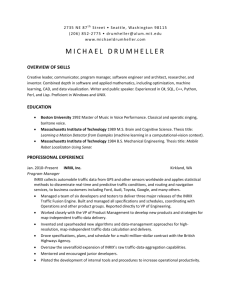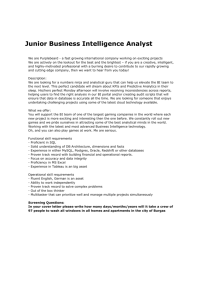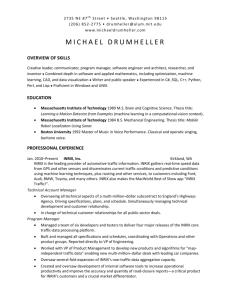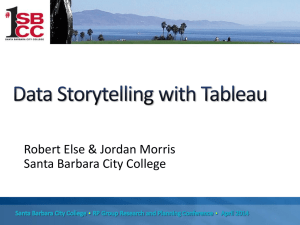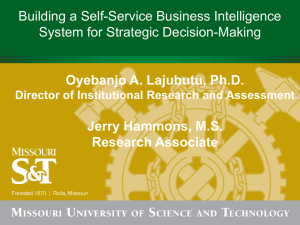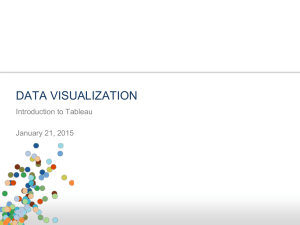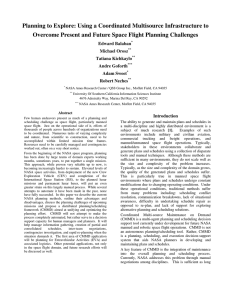2735 NE 87th Street • Seattle, Washington 98115 (206) 852
advertisement
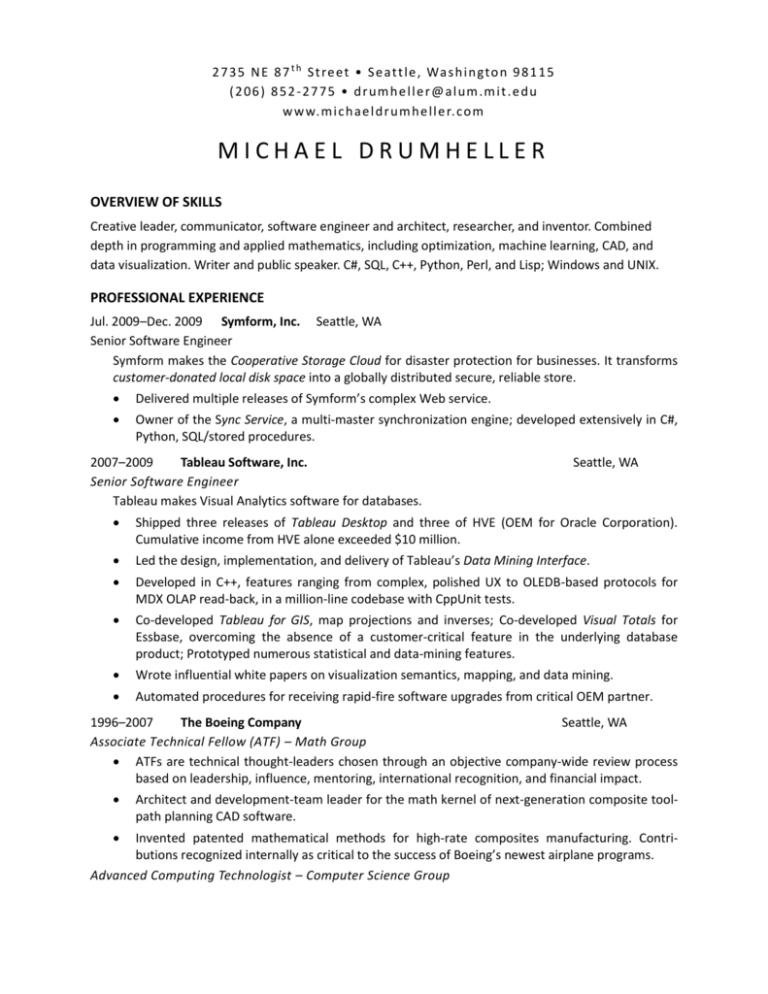
2 7 3 5 N E 8 7 t h S t re et • S e att le , Wa s h i n gto n 9 8 1 1 5 ( 2 0 6 ) 8 5 2 - 2 7 7 5 • d r um h e l l e r @ a l um .m i t . e du w w w. m i c h ae l d r u m h e ll e r. co m MICHAEL DRUMHELLER OVERVIEW OF SKILLS Creative leader, communicator, software engineer and architect, researcher, and inventor. Combined depth in programming and applied mathematics, including optimization, machine learning, CAD, and data visualization. Writer and public speaker. C#, SQL, C++, Python, Perl, and Lisp; Windows and UNIX. PROFESSIONAL EXPERIENCE Jul. 2009–Dec. 2009 Symform, Inc. Seattle, WA Senior Software Engineer Symform makes the Cooperative Storage Cloud for disaster protection for businesses. It transforms customer-donated local disk space into a globally distributed secure, reliable store. Delivered multiple releases of Symform’s complex Web service. Owner of the Sync Service, a multi-master synchronization engine; developed extensively in C#, Python, SQL/stored procedures. 2007–2009 Tableau Software, Inc. Senior Software Engineer Tableau makes Visual Analytics software for databases. Seattle, WA Shipped three releases of Tableau Desktop and three of HVE (OEM for Oracle Corporation). Cumulative income from HVE alone exceeded $10 million. Led the design, implementation, and delivery of Tableau’s Data Mining Interface. Developed in C++, features ranging from complex, polished UX to OLEDB-based protocols for MDX OLAP read-back, in a million-line codebase with CppUnit tests. Co-developed Tableau for GIS, map projections and inverses; Co-developed Visual Totals for Essbase, overcoming the absence of a customer-critical feature in the underlying database product; Prototyped numerous statistical and data-mining features. Wrote influential white papers on visualization semantics, mapping, and data mining. Automated procedures for receiving rapid-fire software upgrades from critical OEM partner. 1996–2007 The Boeing Company Seattle, WA Associate Technical Fellow (ATF) – Math Group ATFs are technical thought-leaders chosen through an objective company-wide review process based on leadership, influence, mentoring, international recognition, and financial impact. Architect and development-team leader for the math kernel of next-generation composite toolpath planning CAD software. Invented patented mathematical methods for high-rate composites manufacturing. Contributions recognized internally as critical to the success of Boeing’s newest airplane programs. Advanced Computing Technologist – Computer Science Group Invented the Super Router (SR), a patented CAD algorithm for tubing design (e.g. aircraft hydraulics). The SR automatically compiles visual descriptions of tubing design constraints into mixed-variable optimization problems. Project Manager and software developer for an internal generative design CAD system. Invented text-processing tool called Spots used for Design of Experiments and optimization. Contributed mathematical and software consulting to numerous projects across the company. 1984–1996 Thinking Machines Corporation Cambridge, MA Senior Software Engineer Developed C/assembly message-passing system called CMMD (a main precursor of modern MPI) for the Connection Machine CM-5 parallel supercomputer. Project Manager for CMMD; oversaw entire life cycle. Primary author of CMMD Reference Manual and User’s Guide. Designed and built comprehensive test suites and test harnesses. Lead developer on Navy project to network CM-5 to Sun workstation cluster, at kernel level. Researcher Developed widely known algorithm for sonar-based robot navigation. Designed, built, and demonstrated a complete stereo machine-vision system for terrain elevation mapping on the Connection Machine CM-2 massively parallel computer. Co-invented and co-implemented massively parallel visual object recognition system. EDUCATION MIT 1989 M.S. Brain & Cognitive Science. Thesis on machine learning in a computational-vision context. MIT 1984 B.S. Mechanical Engineering. Thesis on mobile-robot navigation using sonar. Boston University 1992 M. Music, Voice Performance. PUBLICATIONS Spots: A Powerful File Manipulator [for] Software Automation [...] AIAA 41st Aero. Sci., Reno, Jan. 7, 2003. Constraint-Based Design of Optimal Transport Elements. ASME JCISE, Vol. 2, No. 4, Dec. 2002. Constraint-Based Design of Optimal Transport Elements (conf. version). ACM SM ’02, June 2002. The Vision Machine, with T. Poggio et al., Artificial Intelligence at MIT, Vol.2, MIT Press, 1990. Model-Based Object Recognition Using the Connection Machine, Proc. SPIE Vol. 848 Nov. 1987. On Parallel Stereo, with T. Poggio, Proc. IEEE Conf. Robotics & Automation, 1986. Connection Machine Stereomatching, Proc. AAAI-86, Philadelphia, 1986. Mobile Robot Localization Using Sonar, IEEE PAMI V.9 No. 2, March 1987. Quote from Introduction to AI Robotics by R. Murphy, MIT Press: “[T]he first serious analysis of [sonar in mobile robotics]… a classic.” PATENTS AND PATENT APPLICATIONS Constraint-based Method of Designing a Route for a Transport Element (the “Super Router”). Pat. No. 7,444,269 and French App. 02/12023, with related U.S. Apps. 20030101029 and 20060212276. Adaptive Distance Field Constraint for Designing a Transport Elt., App. 2007088530 (with C. Erignac). Tape Course Generation [for] Compos. Tape Lamination Mach., Pat No. 7,643,970 (with A. Jones et al.). Virtual Proc. Tech. in a SIMD Multiproc. Array, Pat. No. 4,827,403, with Guy Steele, Danny Hillis, et al.
